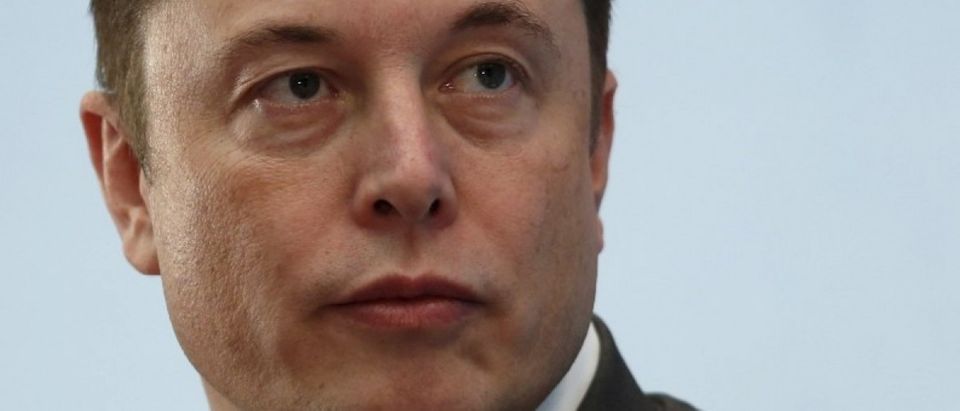The term “crony capitalist” refers to a businessman who succeeds only because of political favoritism available only to political insiders. Probably the best in American history at this game is California’s Elon Musk.
Musk likes to appear in public as a big time industry mogul, as CEO of the electric car company Tesla and as Chairman of the Space X rocket launch company. But a Los Angeles Times expose calculated that Musk’s companies have received $4.9 billion in taxpayer assistance, making him the biggest welfare mama in American history. That taxpayer assistance has taken the form of grants, tax breaks, factory construction, discounted loans, environmental credits, and tax credits and rebates to customers of Musk’s companies.
With nearly $5 billion in taxpayer funded assistance, I could play as a big time industry mogul too. But reaping that taxpayer funded windfall does not come easy. Musk has to be politically nimble to keep that taxpayer pipeline flowing.
Musk was a Hillary Clinton supporter and maximum contributor during the 2016 election. But after the election, Musk flipped over and won appointment to an advisory panel for President-Elect Donald Trump. Musk, however, has long been on both sides of every issue.
Since 2003, political chameleon Musk has contributed $258,350 to Democrats and $261,300 to Republicans, public records show. Musk was a contributor this past election season to Marco Rubio and Lindsey Graham, besides contributing to Hillary to the max. He has favored relaxing America’s immigration laws to enable more free entry into the United States, regardless of the impacts on working people.
But crony capitalist political favoritism can involve more than taxpayer-funded grants, special interest tax breaks, discounted loans, and tax credits and rebates to customers of the favorites. On June 28, 2015, one of Musk’s SpaceX rockets blew up two minutes after take-off, destroying millions in cargo payload headed for orbit.
When an Antares rocket launched in October, 2014 by Musk competitor Orbital, it experienced a catastrophic failure causing destruction of a NASA payload worth $51 million, NASA conducted an investigation into the cause of the failure, and issued an executive summary report within one year. But after the June 28 failure of the SpaceX flight, NASA announced that it “is not required to complete a formal final report or public summary” of [of the Space X failure] since the rocket was on “an FAA licensed flight.”
But the Antares launch failure also involved an FAA-licensed flight. It was also part of the same NASA Commercial Resupply Services (CRS) program as the failed 2015 SpaceX launch.
The disparity in NASA policy between the two launch failures disturbed the Chairman of the House Sciences Committee, Rep. Lamar Smith (R-TX). In a letter to NASA Administrator Charles Bolden, Smith said, “The discrepancy between the two approaches taken by NASA in response to these two similar events raises questions about not only the equity and fairness of NASA’s process for initiating independent accident investigations, but also the fidelity of the investigations themselves.”
NASA did investigate the June 28 failure through its Launch Services Program, while SpaceX conducted its own investigation. The two investigations ended with different conclusions. SpaceX concluded that a supplier for the SpaceX Falcon rocket was exclusively to blame for the accident.
But LSP was not convinced that was correct. NASA Administrator Charles Boldin wrote a February, 2016 letter to SpaceX “expressing concerns about the company’s systems engineering and management practices, hardware installation and repair practices, and telemetry systems based on LSP’s review of the failure.”
Because NASA never resolved the causes of the June 28 launch failure, just 15 months later, on September 1, 2016 another SpaceX rocket blew up on the launch pad, taking with it a $205 million Facebook satellite, and materials for a $62 million government contract. Musk tweeted at the time that SpaceX could not rule out that the explosion was caused by space aliens on a UFO.
The Senate Appropriations Committee has now taken action to end this bureaucratic favoritism for SpaceX. It included report language in a recent Appropriations bill requiring the FAA to produce a summary report on the June 2015 launch failure within 30 days of passage.
If NASA, the U.S. military, private companies, and American science are going to continue trusting SpaceX rockets with their satellites and other materials for launches into orbit, then independent authorities must conduct thorough investigations into SpaceX launch failures. Allowing those failures to continue to pile up is weakening national security and scientific progress, as well as costing our nation billions in equipment and material losses, and the services of the satellites.
Congress has acted. Now it is past time for NASA, the FAA and other governing authorities to do so as well.


